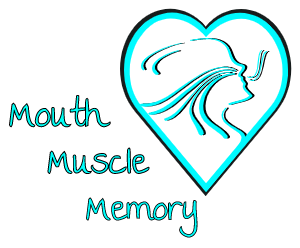Myo 4 Kids
What age is best to start myofunctional therapy? For Parents, once an orofacial myofunctional disorder is identified the prime ages is between 5+ years old. Improved eating, sleep quality, will improve jaw growth, greatly reduce the risk of narrow airway disorder, which can lead to sleep disordered breathing, ADD, behavioral and attention issues.
Targeted exercises for lip strength, tongue mobility, chewing, tongue tie release as needed.
Ages 3-5 are usually good candidates for Minimyo programs.
Minimyo: myo under 5 years old
I operate on the idea that each child has unique case, with many dynamics to consider during the consultation on what treatment would be most effective. I take into account the child’s focus levels, any additional health conditions, behavioral ability (will they be able to do their exercises) etc.. Each child is different, and I want to make sure each Minimyo patient will have the chance to succeed for a happy healthy life.
MiniMyo: is the program for young patients right now.
In the consultation I will go through the ins and outs of therapy, answer any questions and do some exercises with your child to better understand their individual needs.
From there I will be able to personalize a plan, or let you know what might be helpful for your child prior to starting MiniMyo and myofunctional therapy.
What About the 4th Trimester?
The fourth trimester, the 12 weeks following childbirth, is a time of transition for new mothers, but it is also an opportunity for them to slow down from the hectic pace of work to unwind a bit and take care of themselves.
The American College of Obstetricians and Gynecologists recommends that moms take at least four weeks off after giving birth before returning back to work or going back into full-time parenting duties. This period could be extended if needed with the help of family members or by hiring a childcare professional. The goal is not only for the mother’s physical recovery but also the opportunity for the new mother and her newborn to bond. Mouth Muscle Memory presents you with some challenges you may face during this trimester and how to overcome them.
Breastfeeding difficulties usually occur when you have an issue with your milk supply. There are many reasons why supply might be low, such as pregnancy complications and medications you may be taking, like antidepressants. Another breastfeeding problem can be the struggle to get your baby to latch on and suckle properly, which can lead to problems like sore nipples or mastitis. The best way for you to deal with this problem is by using a nipple shield or other breastfeeding aids. If you find you’re having these problems, you may need extra help from your doctor or lactation consultant to get breastfeeding back on track.
You may also want to look into tongue or lip tied babies if your baby is experiencing chronic feeding problems.
A pumping bra provides a hands-free option for you to express breast milk. It’s designed to allow you to pump milk while completing other tasks like reading, watching TV, cooking, or working at your desk. Look for a sports-style bra so that you feel well-supported while you pump and do other household chores. They are available online, so you can shop for them at home.
What about kids above age 5
The good news, kids are still growing from 6-18, and many people keep growing even into their 20s. Because of the this the growth of critical areas like the jaw, and palate are still in their formative years. Utilizing myofunctional therapy during this period of growth can simultaneously train the body to utilize good posture, proper breathing, and strengthening of key underdeveloped muscles in the tongue, face, and throat. The documented effects can improve everything from oxygenation, hydration, chewing improvement (lips closed, mouth not open during bites), focus, reduction in ADD, improvement in sleeping quality, fully developed bone growth, opening of the airway, reduction of snoring, and more. Check out our research archive to learn more.
